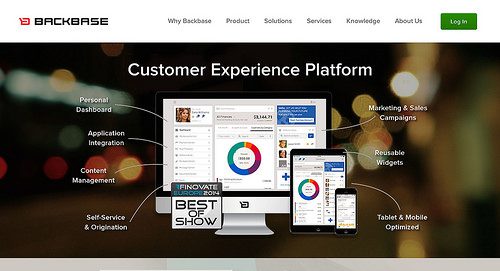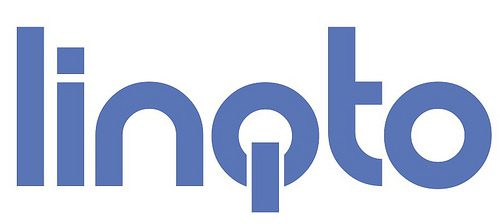FinDEVr, the first event for fintech developers, is right around the corner. For the past few weeks we’ve introduced you to some of the innovators who will be presenting, demoing, and holding workshops on Day One.
Today, we’re happy to help you get to know some of the companies that will be showcasing and sharing their APIs, SDKs and more on Day Two.
BCL Technologies develops APIs for Financial Text Extraction that unlock Big Data in unstructured documents and websites, enabling FinTechDevelopers to easily extract structured Financial Triplets from any source.
Presentation: Unlocking Financial Text
Explore the different use cases for BCL’s Financial Data Extraction APIs for unstructured text, to generate structured data Triplets.
Why it’s Great for Developers:
Automated Financial Extraction APIs to extract Financial Triplets
- More Quickly
- More Accurately
- Without Human Intervention
Unlock Financial Text fast and with high accuracy.
Toronto-based Bionym is a team of experts in cryptography, biometrics, and security. Our first product is the Nymi, a wearable device that enables the user to authenticate once via unique cardiac rhythm and securely and seamlessly assert Persistent Identity to any system.
Presentation: Here I Am: Revolutionizing FI and Banking Experiences with Persistent Identity and the Nymi
Balaji Gopalan is presenting the Nymi Persistent Identity vision and User flow and will review key aspects of the SDK and Developer offering. In addition, he will propose and inspire discussion on select use cases in FinTech where the Nymi can improve engagement, security, and customer satisfaction.
Why it’s Great for Developers:
- Increases both security and convenience
- Enables the creation of new personalized experiences
- Light, shallow yet robust API for all major OSes
The Nymi platform allows Users to be recognized and authenticated for service, workflows, or transactions simply by being present – completely safely and securely.
Blockchain is the world’s most popular, web-based Bitcoin wallet and the most highly trafficked Bitcoin website. Blockchain is the defacto search engine for the Bitcoin community. Blockchain has over 2 million wallets and our footprint continues to grow quickly.
Presentation: Blockchain: The Core API for Bitcoin Development
Blockchain’s API’s power most of the Bitcoin companies in the ecosystem, Utilizing our APIs, you can start a Bitcoin business in minutes. From wallet creation to transaction verification, Blockchain’s APIs have you covered.
Why it’s Great for Developers:
- Most popular Bitcoin API
- Wallet Creation API
- Transactions submitted with our API have fast network propagation time (3-5 seconds)
If you’re wanting to build a Bitcoin product, Blockchain is the one stop shop API for your development needs.
CrowdCurity is a web security marketplace. We connect businesses with security testers. We do bug bounty programs-as-a-service. Bitcoin First.
Presentation: How to Invite Hackers to Your Website
Too many websites are being exploited, and we need to rethink web security. The best way to stay secure and ahead of the bad guys is to invite good, white-hat hackers to test your security. We have made it easy to connect businesses to a crowd of security researchers.
Why it’s Great for Developers:
- No bugs, no cost. Don’t pay for expensive consultants.
- Leverage the knowledge of the crowd
- Agile security around the clock
Entersekt is an innovator in transaction authentication and mobile app security. Our one-of-akind approach to harness the power of electronic certificate technology with the convenience of mobile phones providing financial institutions and their customers with full protection from online and mobile banking fraud.
Presentation: Securing Mobile Applications Through Transport iLayer Diversity
Mobile security is becoming increasingly important as more functionality is shifting to these devices. But how do we ensure the integrity of the phone and the server we’re connecting to? This is a common problem and has been addressed by recommending out-of-band authentication schemes.
Why it’s Great for Developers:
- Avoids the open Internet of SMS for user and transaction authentication
- Provides end-to-end encrypted communication
- Counters phishing, man-in-the-middle/browser attack
Harnessing the power of public key infrastructure, Transakt transforms almost any mobile phone into a powerful weapon in the fight against account takeover fraud.
Google Cloud Platform enables
developers to build, test, and deploy applications on Google’s highly scalable and reliable infrastructure. This suite of services allows developers to choose from computing, storage, and application services for web, mobile, and backend solutions.
Presentation: Big Data on Google
Google has been the most innovative Big Data company in the World, having paved the way for highly distributed parallelized workflows. Technologies like Hadoop, Flume, Dremel, and HBase were made possible by Google’s research and development efforts. Now Google is outsourcing its own Big Data secret.
Why it’s Great for Developers:
- Seamlessly scale into petabytes of data and dozens of thousands of servers
- Simplicity and ease of use
- Performance
Google’s BigQuery and Dataflow services are the next generation of Big Data tools, allowing you to focus on solving your Big Data problems rather than building systems.
GreenAddress IT is a leader in securing bit coins and providing instant clearing confirmations. It supports desktop, mobile, and web apps, and offers a very featureful and secure wallet as well as APIs to enable third party developers.
Presentation: GreenAddress: Instant and Secure Bitcoin
The presentation is introducing bit coin’s multi signature features. These features allow users to radically improve the security of bitcoin wallets, as well as create new services like instant confirmation allowing for faster arbitration between exchanges.
Why it’s Great for Developers:
- Available for all platforms and easy to use
- Instant confirmation for super smooth transactions
- Vastly improved security model via multisig and two-factor authentication
GreenAddress’ API gives 3rd parties the ability to securely manage and receive instant confirmations without having to wait for transactions.
Kiind helps businesses reward their employees and customers with gift cards., With Kiind, you can easily send personalized offers to multiple contacts, and Kiind’s technology allows you to defer when you pay for rewards and gifts, thereby saving you money.
Presentation: Making Gifting Easy
We’ll touch on Kiind’s API and where it is headed as well as our marketplace
Why it’s Great for Developers:
- Measurable tracking and reporting
- Branding
- Offer a choice between gifts
Send measurable gifts and only pay for what is used. Kiind makes your gifting easy so you can focus on what you know best.
Knox Payments allows people to make ACH payments using only their online banking login information, providing the cheapest, safest, and easiest way to accept digital payments.
Presentation: ACH That Doesn’t Suck: No Account and Routing Numbers Needed
Developing ACH processing the traditional way is horrible. Your users don’t know their account and routing numbers and you don’t know if they actually have the money. Knox has solved these problems with the ease of just logging into your online banking, making ACH cheaper, safer, and easier.
Why it’s Great for Developers:
- No account and routing numbers needed
- No new accounts for your users
- Guaranteed overnight funds for ACH
ACH sucks and credit cards are expensive: Knox fixes that without needing your users to create any new accounts.
MASSPAY is m-payments for every(f)one. If you know how to dial, you know how to pay. It’s simple and convenient. You don’t even need a smartphone with a data plan – you can use it with an NFC QR code. MASSPAY is the first solution dedicated to emerging and developed markets with minimum investment.
Presentation: Mobile Payments for Every(f)one
How to pay using a feature phone or a smartphone without any app. Why MASSPAY is a perfect solution for developed markets as well as emerging or developing countries. Why MASSPAY is for every phone and everyone.
Why it’s Great for Developers:
With MASSPAY you can process:
- Any transaction
- From any phone (with or without application or data plan)
- In a single easy scenario
If you know how to make a phone call, you know how to pay. With minimum of investment and maximum of simplicity and convenience, from any phone.
Morpheus Aiolos is a company based in Spain that has developed financial software since 2012. We have two featured products: an API to extract bank transactions and a clone of Mint, which uses the API.
Presentation: API for Banking
Our API standardizes the way an application can extract information form any bank account. We’re describing how it works, with some examples.
Why it’s Great for Developers:
- First API that works in countries where there is not a standard for banking
- Already tested in a production environment
- 5,000 users in Spain
We can add banks to adapt the API to other countries in a matter of days















































